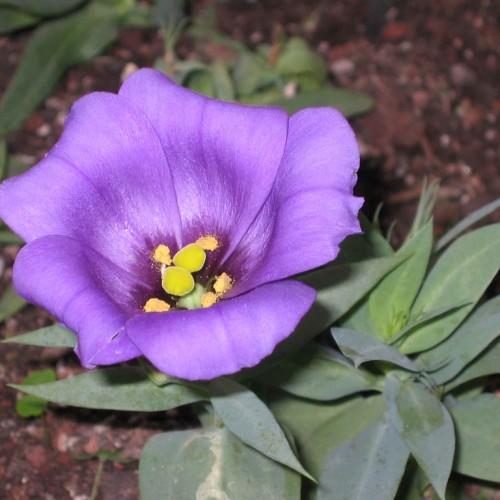
lisianthus
Eustoma grandiflorum
Also Known As - prairie gentian,Texas bluebell,prairie gentian,Texas bluebellCycle:
Herbaceous Perennial
Watering:
Average
Hardiness Zone:
8 - 10
Flowers:
Flowers In Summer
Sun:
full sun,part shade
Soil:
Well-drained
Fruits:
Fruits In Autumn Ready In Summer
Leaf:
Yes
Growth Rate:
Low
Maintenance:
High
watering
Lisianthus should be watered when the soil feels dry to the touch; this may be up to every 2 days in warm and dry conditions. When watering, aim to moisten the entire root zone, not just the surface. It is ideal to water in the early morning, as this is when the plant can make best use of the water. Wet foliage in the heat of the day can cause issues with mildew. After watering, allow the soil to drain completely and discard any water that collects in the saucer or pot.
sunlight
Lisianthus (Eustoma grandiflorum) is a shade loving plant that prefers 4 – 6 hours of direct daylight either in the morning or late afternoon. They need plenty of bright, indirect light to grow strong and healthy, and can suffer from too much direct light, sunburn or possible plant death. If lisianthus is growing outdoors in direct sunlight, shade it during the hottest and brightest parts of the day and keep it out of strong winds in the garden. In colder climates, lisianthus can be grown outdoors if placed in a spot with some protection from the wind.
pruning
Lisianthus (Eustoma grandiflorum) does best with careful pruning to promote healthy flowering and grow bushier. Prune lisianthus plants when the stems begin to grow taller than 12 inches. Remove some of the longest stems, leaving some of the buds at the base of the stem, which will help create fuller, bushier growth. Prune lisianthus in the spring or early summer for optimal blooming. Furthermore, remove any dead or wilted stems and remove any flower heads that have already bloomed.
